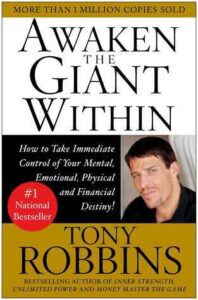Atomic Habits in 10 Minutes: A Quick Summary of James Clear’s Bestseller


Introduction
Have you thought about how a little change in your everyday activities can change how you live your life? This is exactly what James Clear’s Atomic Habits, which is announced as a bestseller attempts to answer. This book’s purpose is to point out that success isn’t about taking massive steps but about making tiny, consistent steps that can also do the work— this what James Clear affectionately calls Atomic Habits.
Primarily, Atomic Habits discusses how we as people tend to create lasting identity changes through the repetition of small habits, and challenges us to think big by doing ordinary and somewhat insane things. Getting fit, being more active and productive, or even meeting that energy goal you’ve set for the new year all become possible once you grasp Clear’s techniques that are even the fundamentals for succeeding businesses.
In this Atomic Habits summary, we’re going to outline the key points of the book in chronological order starting from the Four Laws of Behavior Change, habit forming and breaking mechanisms and strategies, and the highly effective habit loop. Sounds delicious? Let’s move onto these amazing principles with Read Traverse!
Table of Contents


The Power of Tiny Changes: Atomic Habits Summary
Most of the time big dreams eat people alive, but Atomic Habits makes us reconsider this fascinating reality, the biggest results are achieved through the smallest actions undertaken on a consistent basis. To James Clear these actions are called “atomic habits” as these are just the similar little bricks that will within time build a huge structure.
Consider enhancing yourself by just 1% a day. It may appear small but after one year, those daily percentage changes turn out to be massive 37% growth. That’s the reason why small changes have such an effect, it’s the compounding effect. Clear stresses on the need to focus on the habits and not the results. In other words, say, “I want to eat healthy and walk 10 minutes instead of saying I want to lose 20 pounds”.
It is the longevity of tiny changes that is their strength. In doing so it increases the chances of those tiny changes sticking because they are easier to change. In Clear’s voice, “Success is the result of what you do repeatedly”- “Not some event happens once in a lifetime”.
At Read Traverse, these are the principles of self growth that we believe in. We put together this Atomic Habits summary to demonstrate that no matter how small, every action has the potential to significantly alter the course of your life. The change starts when you set up better work habits and improve the personal ones, but the key is to start small and stay consistent.
The Four Laws of Behavior Change
James Clear sets forth his Four laws of behavior change – a set of principles that assist you to cultivate the good habits and avoid the bad ones. Let’s get into them:
- Make it Obvious : All habits are preceded by some cue that is present in your social context. Therefore, put those cues out there for all to see because that will make you likely to establish the desired habit. For instance, if your goal is to consume more water, keep a bottle on your desk. To quit an unbeneficial habit, however, remove cues – for instance, cut out the junk food from your house.
- Make it Attractive: In order to implement a new habit, one should have the desire to do so. Connect your habits with something you love. For example, do exercises while listening to a podcast you enjoy. Clear refers to this phenomenon as “temptation bundling.”
- Make it Easy: Make it hard to fail by removing the chances of failure with ease. Make everything granular. Create small and easy plans. For example, when starting a journal, commit to writing a single sentence each day. The success rate increases when the threshold is decreased.
- Make It Satisfy: Encourage yourself by giving rewards. As an example consider that after each time you work out you’ll allow yourself to watch your favorite show. Allow Yourself Instant Gratification as motivation for the behavior.
These laws also work opposite to breaking bad habits. Make them Invisible, Unattractive, Difficult and Unsatisfying . This is the concept we really find helpful at Read Traverse if you want to make transformative changes over a long period.
Understanding the Habit Loop
There is always a routine in which every activity is performed. That is the reason every habit can be placed using “The Habit Loop”: Cue, Craving, Response and Reward. Knowing this loop is a key to shape better habits and remove the bad ones. Once you understand it’s so much easier to grasp ‘What leads to me doing this’ principle.
- Cue: This is the trigger that starts the habit. A good example is when someone feels bored it makes them scroll through social media.
- Craving: The cue leads to action and that is where the craving comes in, because boredom is only a state of mind, where seeking entertainment is a wish.
- Response: This is what fulfills the craving action. Here, it’s opening your favorite app.
- Reward: Finally comes the result of all actions taken previously which strengthen the habits. Scrolling offers a reward of temporary distraction.


It is possible for someone to improve their habits through this loop, all they have to do is change one part of the loop. New habits can create obvious cues, compelling cravings, simple responses, and satisfying rewards. For Example If you want to build a reading habit, you can use the book on the pillow as a cue. After that, the book gets you craving it. To respond, you only need to read a single page, and then you reward yourself by achieving something.
At Read Traverse, we also believe that readers should build such habits which are hard to break. Building the habit loop is not that complex, anyone can make their day to day life more structured.
Strategies for Building Good Habits
One of the common mistakes people say is that building up a habit is difficult, in fact it is not that hard. James in the book Atomic Habits has provides the actionable tips to follow and make the process easier:
- Habit Stacking:- Habit Stacking is the habit of adding new habits onto the current habits of everyday routine. For e.g., after brushing your teeth, you could add flossing as the next step. That’s how you can take advantage of existing habits to create and build new ones.
- Implementation Intentions:- Specifying when and where you’ll do it. Starting an exercise limit will help exterminate the boundary and increase chances considerably. Instead of saying ‘I need to work out’ state “I am going to do 10 pushups at 7am in the living room.” The more clearer the goal, the easier it is to achieve the aim.
- Start Small :- Don’t find perfection in your work. Just start with small habits that feel flawless. For someone who is interested in writing, start by writing just a single sentence each day. Confidence and consistency come from accumulating small victories.
- Design Your Environment:- Change your surroundings in order to be consistent in your personal habits. If you want a healthy & positive lifestyle you should replace the snacks in your room with fruits and vegetables if you wish to adopt a more healthy diet.
Own Mantra: Don’t try to be best, Just simply do your best Everyday.
At Read Traverse, we understand the appealing features of these strategies because they are oriented towards making progress rather than just encouraging it. It becomes fun when it is not just possible to change but also easier to combine and simplify your habits.
Techniques for Breaking Bad Habits
Instead of seeing the bad habits which dominate us as a kind of destiny, it is beneficial to even somewhat stigmatize them as James Clear emphasizes by creating a sort of utility from inversion of the Four Laws of Behavior Change. Here’s how one can apply these techniques.
- Make It Invisible:- Use trigger cues to eliminate the bad habit. E.g. If you think you are spending too much time on your phone, you can say that it’s a good idea to put it in another room while working. Out of sight does mean out of mind.
- Make It Unattractive:- Change your perspective to point out the negative effects of the habit. Think like that how late night snacks affect your sleep and energy quality rather than seeing them as a reward.
- Make It Difficult:- Make a bad habit difficult to follow, add friction in a way. As an example, if you want to reduce the binge-watching of movies & series uninstall the streaming applications in your device or logout them after you finish watching.
- Make It Unsatisfying:- Provide an immediate output that will flag a certain bad habit being practiced. For instance, make an agreement with your partner or friend that if you don’t do your exercises you will pay them a certain amount of money, the commitment makes the habit extremely unwanted.
Clear proclaims that although, when it comes to making or breaking the bad habit, he believes that is relatively difficult, the secret is changing your context and outlook in a decisive and systemic way – that small changes total-up just as in the case of building the good habit.
At Read Traverse, we are focused on providing our readers an actionable plan for moving forward. Adopting these methods will assist you in replacing negative behavior with the positive ones which will assist you in being successful.
How to create Good Habit Formation and Break Bad Habits
| The Habit Loops | Building Good Habits | Breaking Bad Habits |
|---|---|---|
| Cue | Place your workout clothes on your bed the night before. | Remove the TV remote from the living room. |
| Craving | Create a playlist of your favorite songs for your workout. | Replace sugary drinks with flavored water or tea. |
| Response | Start with just 5 minutes of exercise. | Use a timer to limit social media usage. |
| Reward | Treat yourself to a relaxing bath after completing your workout. | Log daily progress to visualize time saved. |
The Role of Identity in Habits
It has been said that your habits explain your identity. According to James Clear, to effect a change that is everlasting, one ought to stop concentrating purely on the result but rather develop habits that are influenced by identity.
Instead of saying, “I want to lose weight,” think instead, “I am a healthy person.” This is powerful because once you come up with the idea of being a healthy person, then habits such as consuming nutritious foods or exercising are an inherent part of you.
Clear states that every action you take is an endorsement for the type of person you are working towards to be. Individually, actions like opting for water instead of soda or walking instead of driving may not seem like much, but they contribute towards your identity. In time, these unassuming initiatives evolve into larger ideas, strengthening the way you see yourself.
For instance, losing the last-minute habit tells yourself that you should stop being a procrastinator first. For example, you should stop considering yourself a last-minute person and rather start seeing yourself as one who prepares in advance.
At Read Traverse, we really appreciate how such a change in mindset shifts the goal of habit forming so that it is an exciting pursuit as opposed to a tough task. This is because emphasizing on the reversed order of things, a person first pictures the final outcome that he or she desires, then the aim is to build habits that can help him or her become the person he or she intends to be, which quite literally changes a life for the better.
Conclusion: The Impact of Atomic Habits
James Clear’s book should be read in understanding and equipping oneself on how to make small, yet consistent and well-planned changes that will eventually become life-altering habits. You have the power to create habits that make sense to you by comprehending the Four Laws of Behavioral Change, taking advantage of the habit loop, and altering your identity to suit the actions you want to undertake.
Self-improvement does not have to be achieved through major changes. It all begins with a decision to adopt slightly altered behaviors that can result in tremendous change, one step at a time. It does not matter if you wish to better your health, increase your level of productivity or build new interpersonal relationships the rules are the same and can be applied in any area.
We at Read Traverse understand how books can inspire people to act, which is why we are presenting you with this summary of Atomic Habits, in the hopes that it provides you with motivation. If so, then why wait any longer? Apply all of these concepts today and see how they change your habits for the better in the future.
At Read Traverse, we’d love to know how you’re transforming your habits either through Atomic Habits techniques or any other thing you do! Comment below and join the conversation. Follow us on our social media and get the latest updates. & “Find Paths via Traverse the world of Reading”.
FAQs
Q1: What is the main idea of Atomic Habits?
Ans: The main idea of the book is that ‘atomic habits’ that are life-long and active in one’s day to day life, however small and consistent changes can create great results and benefits over time. It shares mechanisms that can assist a reader to develop good habits and terminate bad ones.
Q2: How can I use the Four Laws of Behavior Change?
Ans: To form a habit, there is a pattern to be followed. One is to, Make it obvious, attractive, easy and satisfying. While to eliminate a bad habit, one needs to reverse the laws and make it invisible, unattractive, difficult, and unsatisfying.
Q3: What is habit stacking?
Ans: Habit Stacking means connecting a new habit to an old existing habit. For example, after brushing your teeth, you can add meditation for one minute then the previously started habit is now followed by the freshly formed habit, which makes it easier to comprehend.
Q4: Can bad habits really be broken?
Ans: Yes, By knowing what would trigger a bad action and reversing it through means such as mindset change, adding friction towards a certain action and even providing a motivation makes you stronger and as such patterns of enhancing bad habits and replacing them with positive behaviors.















